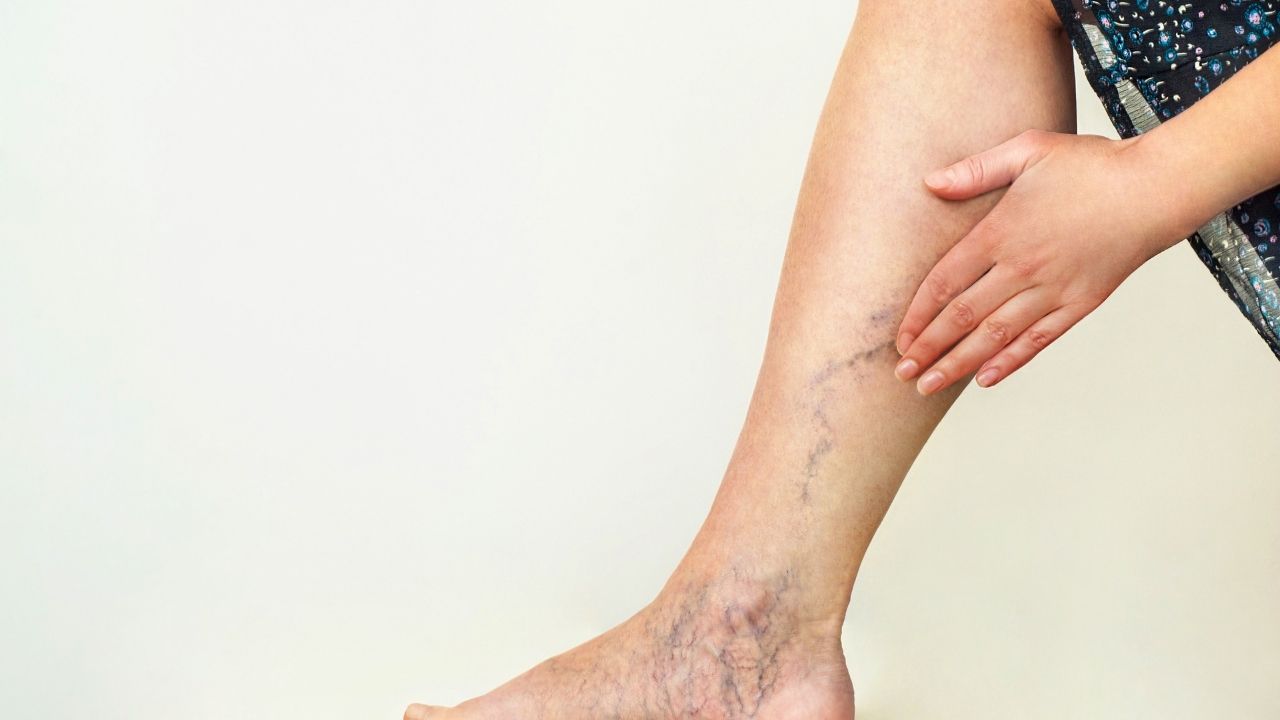Health
Treatment For Varicose Veins

Varicose veins are discolored, enlarged veins that typically appear on the legs. While this condition is often hereditary, it can also be caused by pregnancy or obesity. Varicose veins can be uncomfortable, but there are steps that you can take to reduce your symptoms. Treatment for varicose veins can be done through physical therapy, vein stripping, and laser surgery. Many people with varicose veins develop the condition due to prolonged periods of standing. To prevent the appearance of varicose veins, it is essential to take breaks and elevate your legs often. While they do not pose any health risks, you may want to seek treatment for varicose veins for cosmetic reasons. Below are some of the common treatments offered by Upper East Side varicose veins specialists.
1. Sclerotherapy
For small spider veins that are causing discomfort, your doctor may recommend sclerotherapy. This treatment involves injecting a unique solution into the affected area. The solution irritates the lining of the blood vessel and causes it to collapse and fade away. A single injection lasts anywhere from three months to two years. There is a risk of infection and bruising, but the procedure is generally painless.
2. Compression Stockings
Compression stockings are elastic garments worn on the legs to improve symptoms associated with varicose veins. The ideal compression level can be determined by your doctor but typically ranges between 20 and 30 millimeters of mercury. Compression stockings work by reducing the diameter of veins, which increases blood flow speed throughout your body. It is essential to talk with your doctor about getting the proper sized stockings. If you try on the wrong size, it can worsen symptoms like swelling and pain. High heels should be avoided, as they increase pressure on varicose veins in your legs.
3. Laser Treatment
Although laser surgery is considered a last resort treatment for varicose veins, there are some benefits to this procedure. Laser surgery works by sealing the vein and removing excess blood from the area. This minimizes symptoms such as itching and swelling, but it can also create scar tissue in the process. If you have severe symptoms that reduce your quality of life, laser surgery may be the right treatment option for you.
4. Ambulatory Phlebectomy
An ambulatory phlebectomy is a minimally invasive procedure that can improve symptoms of varicose veins. During this treatment, your doctor will make small incisions in the affected area and remove the vein with a unique tool called a balloon embolectomy catheter (BEC). The BEC is inserted under high pressure to remove the vein, which causes minimal scarring and pain. Recovery time is quick, with many patients returning to work within a few days of their procedure.
5. Endoscopic Vein Treatment
There are several endoscopic vein treatment options available, but sclerotherapy is one of the most commonly recommended. This treatment involves injecting a unique solution into the affected area to remove the varicose vein. The procedure is minimally invasive and often performed in an ambulatory care center. Patients may experience pain or itching after the procedure, but this discomfort typically goes away quickly.
In summary, varicose veins are discolored, enlarged veins that typically appear on the legs. If you have this problem, you can benefit from various treatments, including sclerotherapy, compression stockings, ambulatory phlebectomy, and endoscopic vein treatment.
Health
Snack Smarter: The Rise of Low-Calorie Almond Butter for Active Lifestyles

The snack aisle is shifting. For those who balance a busy life with a commitment to health and fitness, the rise of low-calorie almond butter offers a new way to snack smarter. American Dream Nut Butter is at the center of this change, blending clean ingredients with dessert-inspired flavors and added protein to create almond butter that is both nutritious and enjoyable.
Why Almond Nut Butter Is Key to Clean Eating
As consumers become more mindful of their food choices, the spotlight is increasingly on nutrient-dense snacks that provide sustained energy without excess calories. Almond butter, especially in low-calorie varieties, meets this demand by offering a rich source of healthy fats, fiber, and protein in a compact form. Compared to traditional spreads, such as peanut butter, almond butter often provides a smoother, lighter alternative with a different nutritional profile.
For those who track macros or embrace meal prepping, almond nut butter fits neatly into their plans. Its balance of fats and protein supports satiety, helping to keep hunger at bay between meals or during workouts. American Dream Nut Butter elevates this concept with high-protein options that blend the wholesome qualities of almonds with a subtle sweetness inspired by classic desserts.
How Much Protein is in Low Calorie Almond Butter for High Performance?
One common question around almond butter is: how much protein does almond butter contain? While natural almond butter provides a moderate protein boost, American Dream Nut Butter takes it a step further by creating blends that enhance protein content without relying on artificial sweeteners or fillers. This approach suits those seeking fuel for recovery or sustained energy throughout their day.
These protein-enhanced almond butters can work as a pre-workout snack, a post-exercise treat, or simply as a midday pick-me-up that aligns with a health-conscious lifestyle. The brand’s small-batch production method ensures each jar maintains a fresh, creamy texture that spreads easily or drizzles beautifully over everything from oatmeal to fruit.
Buy Almond Butter: Unique Flavors from American Dream

American Dream Nut Butter distinguishes itself with unique flavor profiles, such as Cinnamon Toasties and Cookie Batter. These offerings embrace the idea that healthful snacks can still delight the palate, using clean, natural ingredients to create indulgent taste experiences without sugar bombs or artificial additives. Each batch is hand-whipped in-house, reflecting the brand’s commitment to quality and care.
Their dedication to natural flavors and nutrient density allows consumers to enjoy a dessert-inspired snack while keeping their wellness goals intact. Whether you’re looking to buy almond butter that tastes like a treat or are curious where you can find almond butter crafted with both nutrition and flavor in mind, American Dream Nut Butter offers an accessible option.
Almond Nut Butter: Fuel for Athletes and Busy Parents
Almond butter’s versatility makes it appealing for a wide range of active lifestyles. For athletes, it provides a balanced blend of nutrients that supports energy and recovery without unwanted additives. For busy parents or professionals juggling multiple demands, it’s a convenient, clean snack that fits into hectic schedules without compromise.
The brand’s YouTube channel offers video insight into how these nut butters are crafted, revealing the hands-on process that ensures quality in every jar. By choosing American Dream Nut Butter, consumers support a product that embodies family values and a personal story of overcoming dietary challenges to create wholesome alternatives that everyone can enjoy.
Where Can You Find the Best Almond Butter & More? The Future Is Here
The growing interest in low-calorie nut butter reflects a broader shift in how people approach snacking—valuing nutrition, flavor, and mindful eating in equal measure. American Dream Nut Butter’s approach, which combines protein-rich formulas with all-natural ingredients and enticing flavors, shows how almond butter, peanut butter, and cashew butter can evolve from a niche health food into a daily staple for those who want to snack smarter.
For more on the evolving nut butter market and how it aligns with fitness trends, check out this feature on the rise of healthy high-protein nut butter. To explore American Dream Nut Butter’s full collection and shop their almond butter selections, visit their website.
American Dream Nut Butter invites you to experience healthy nut butters that strikes a balance between enjoyment and mindful nutrition—perfect fuel for active days and wellness routines alike.
*Images sourced from American Dream Nut Butter
-

 Tech4 years ago
Tech4 years agoEffuel Reviews (2021) – Effuel ECO OBD2 Saves Fuel, and Reduce Gas Cost? Effuel Customer Reviews
-

 Tech6 years ago
Tech6 years agoBosch Power Tools India Launches ‘Cordless Matlab Bosch’ Campaign to Demonstrate the Power of Cordless
-

 Lifestyle6 years ago
Lifestyle6 years agoCatholic Cases App brings Church’s Moral Teachings to Androids and iPhones
-

 Lifestyle4 years ago
Lifestyle4 years agoEast Side Hype x Billionaire Boys Club. Hottest New Streetwear Releases in Utah.
-

 Tech7 years ago
Tech7 years agoCloud Buyers & Investors to Profit in the Future
-

 Lifestyle5 years ago
Lifestyle5 years agoThe Midas of Cosmetic Dermatology: Dr. Simon Ourian
-

 Health6 years ago
Health6 years agoCBDistillery Review: Is it a scam?
-

 Entertainment6 years ago
Entertainment6 years agoAvengers Endgame now Available on 123Movies for Download & Streaming for Free
